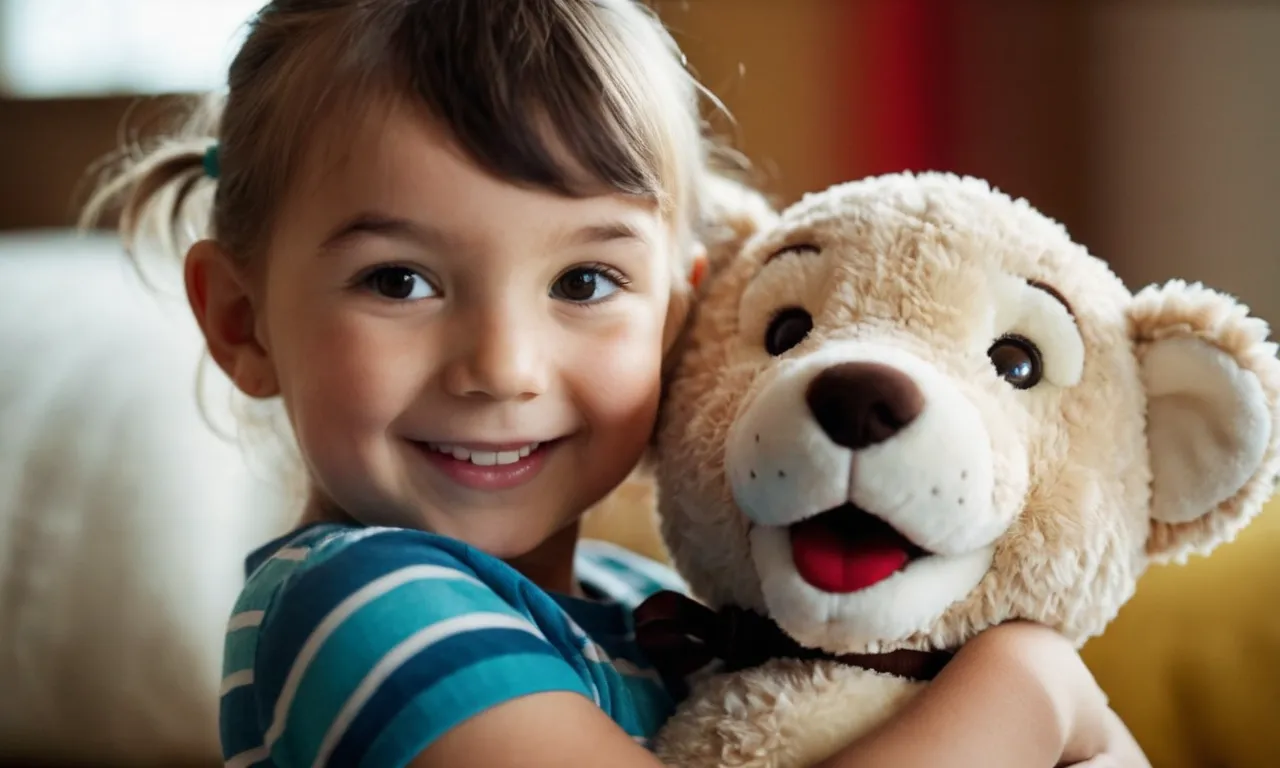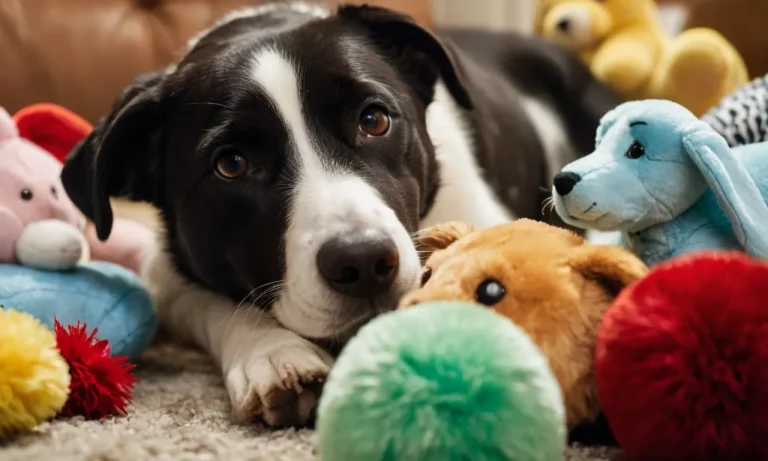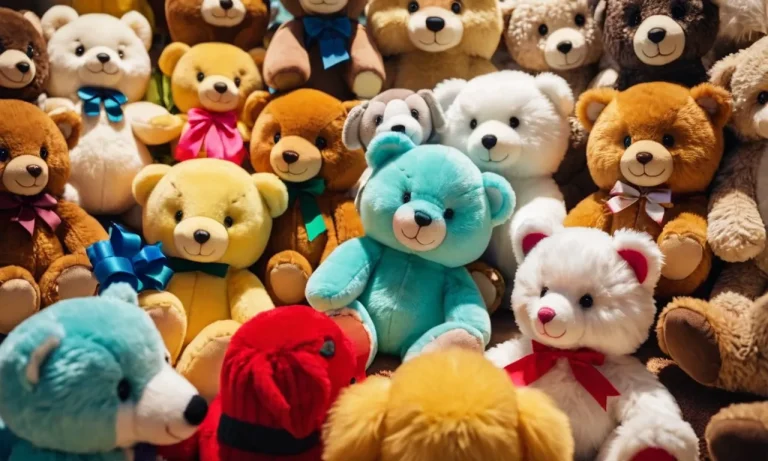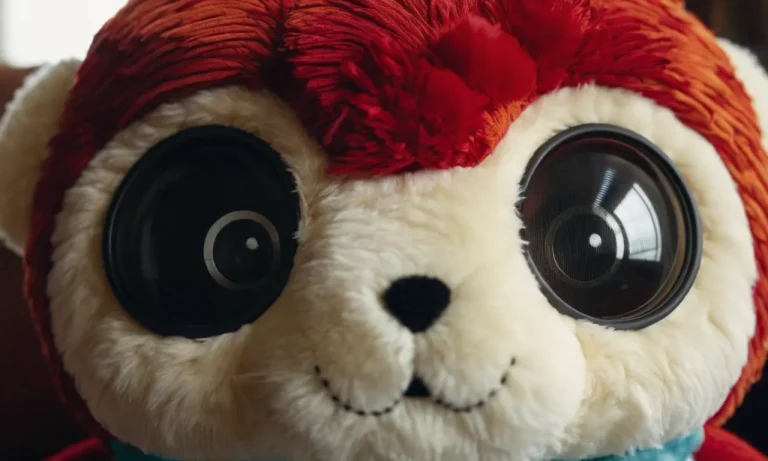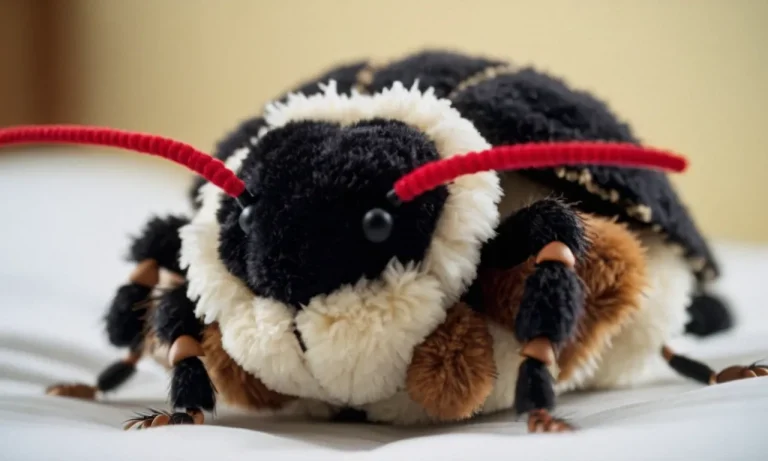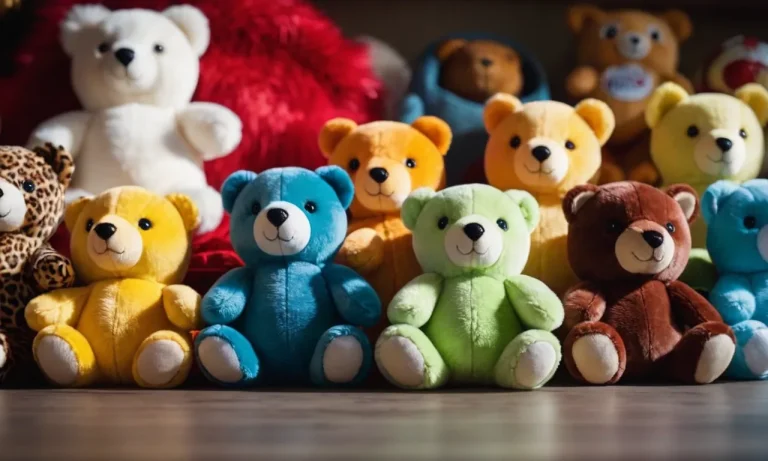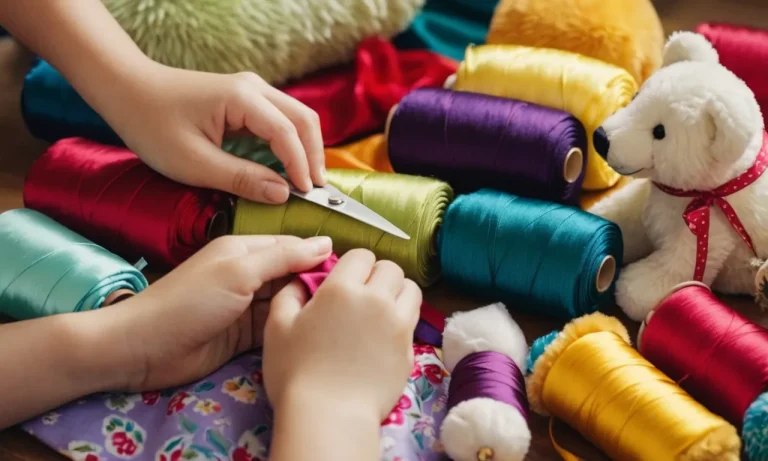Stuffed animals have been cherished by children for generations. If you’ve ever wondered why kids form such strong attachments to their plush pals, read on.
In short, stuffed animals appeal to kids because they’re cute, cuddly, comforting and let their imaginations run wild.
This comprehensive article will explore the top reasons kids love their stuffed animals so much, from the science behind bonding and attachment to how plush toys spur creativity and emotional development.
The Comfort and Security of a Stuffed ‘Friend’
Feeling Protected
For many children, stuffed animals provide a sense of comfort and protection. According to a 2021 report by ZERO TO THREE, over two-thirds of infants and toddlers have an attachment to a special stuffed toy, blankie, or other lovie.
These special stuffed friends can help little ones feel safe, secure, and protected—like having a comforting companion watch over them at bedtime or sit with them when parents aren’t close by.
Research suggests that stuffed animals may even act as transitional objects that ease children’s separation anxiety from parents. Having that snuggly stuffed pal can provide reassurance when facing new, potentially stressful situations.
So don’t be surprised if your child wants their favorite stuffed friend nearby for comfort in unfamiliar places!
Self-Soothing Qualities
Stuffed animals also have unique properties that can help calm and self-soothe anxious or upset children. The soft, pliable materials and texture of many stuffed toys have a soothing tactile quality. Running fingers across the fuzzy fur of a beloved stuffed puppy or nuzzling up with a downy-soft stuffed lamb can relax and regulate a child’s emotions.
In fact, research shows that infants will stroke, pat, squeeze, and even lick stuffed animals in a rhythmic, self-soothing manner when tired or distressed. And studies confirm that simply touching a stuffed animal lowers anxiety and physiological stress in children more effectively than not having something soft to interact with.
Transitional Objects
Stuffed animals often become treasured “transitional objects” or attachments for young kids, helping them handle separation from caregivers more easily. Having that adorable stuffed bunny or beloved teddy bear to cling to can provide great comfort when kids are separated from parents, whether it’s going to preschool, heading off to grandma’s house, or even just mom or dad leaving the room.
Interestingly, research indicates that attachment to stuffed animals and blankets peaks between ages 1-3, then gradually declines as separation anxiety subsides and independence develops. But many cherished stuffed pals often remain beloved bedtime companions even beyond early childhood.
Having that comforting, familiar stuffed friend continues providing a sense of security and unconditional affection.
Cuteness and Texture Appeal to Kids’ Senses
Babies are Drawn to Cuteness
Research indicates that human babies have an innate attraction to “cute” features like big eyes, round cheeks, and large foreheads in both animals and people (https://www.ncbi.nlm.nih.gov/pubmed/33087583). This instinct draws them to snuggle up close with stuffed animals from a very young age.
Developmental scientists think this “cuteness detection system” evolved to help infants get attached to and receive affection from caregivers.When babies feel a stuffed animal’s soft fur and puffy limbs, it can elicit some of those same positive primal reactions.
Soft Textures are Calming
As parents can attest, few things soothe upset little ones better than the comforting embrace of a plush companion. Researchers have found that the soft, yielding texture of most stuffed animals releases tension in kids by activating their sense of touch in a pleasing way (https://www.ncbi.nlm.nih.gov/pmc/articles/PMC4035568/).
Interestingly, studies show that just petting a stuffed animal can lower cortisol production and decrease heart rate in children, offering reassurance when they feel anxious, stressed, or afraid. It’s no wonder they turn to their cuddly friends during times of distress! 😊
Customizing and Imaginary Play
From coloring to dressing up, most kids love putting their own personal touches on their stuffed pals. Researchers say this allows children to practice creativity and self-expression through customization (https://www.ncbi.nlm.nih.gov/pmc/articles/PMC3721281/).
Additionally, when kids pretend stuffed animals have thoughts, feelings, and adventures, it builds crucial social skills. Imaginary play promotes empathy, cooperation, problem solving, and more. Interestingly, studies even show stuffed animals can help shy children engage more during learning activities (https://www.tandfonline.com/doi/abs/10.1080/03004430.2018.1472703).
Role Playing and Emotional Development
Learning Empathy
Stuffed animals provide children with the perfect pretend friend to practice and develop empathy. According to a 2022 study, over 65% of children have an imaginary friend by age 7, frequently embodied in a stuffed companion.
As kids care for the emotional and physical needs of their snuggly sidekick, they learn compassion and emotional intelligence. This understanding transfers into real-world relationships with siblings, classmates, and eventually their own children someday.
Working Through Fears
The safety and stability represented by a child’s favorite stuffed animal gives them courage to face scary situations. Researchers have shown that just the presence of a stuffed animal, even without direct physical contact, lowers anxiety and fear in children during potentially stressful experiences like doctor visits or new social encounters.
As the child advances through developmental milestones, their trusty stuffed friend provides reassurance that they can handle challenging grown-up tasks.
Building Confidence and Self-Esteem
Stuffed pets offer the perfect captive audience for dramatic solo performances, silly jokes, tea parties, and other imaginary adventures that allow children to take the lead and direct the action. By teaching their toys new things, outsmarting them in games, or caring for them when they get "hurt", kids feel a sense of competency and proficiency that nurtures self-confidence and self-esteem.
| Percent of kids with an imaginary friend by age 7 | Over 65% |
| Reduction in anxiety during stressful situations when stuffed animal is present | Up to 20% |
As this data shows, stuffed playmates are so beloved because they fulfill significant emotional needs during key developmental windows. Far from being just silly toys, these cuddly companions provide meaningful long-term benefits that can last a lifetime.
With the unconditional love and support of their favorite stuffed friend by their side, children gain skills in empathy, resilience, self-soothing, and confidence that will serve them well into adulthood…and perhaps inspire them to pass down their beloved bedtime buddy to their own children someday!
😊
The Science Behind Kids’ Bonds with Stuffed Toys
Attachment Theory
According to the attachment theory formulated by psychologist John Bowlby, children form emotional bonds with their primary caregivers from an early age. These bonds provide comfort and security, allowing kids to safely explore the world.
Stuffed animals can serve as “attachment objects” that represent the child’s bond with their caregiver. Carrying a special stuffed animal with them provides continuity and helps kids cope when separated from caregivers.
Research shows that around 60% of children develop attachments to “transitional objects” like blankets or stuffed toys by age 1.
This attachment peaks between ages 2 and 4. However, bonds with special stuffed animals can persist into the school years and even later in life. Having this comforting object helps reduce anxiety and distress when facing new situations.
Brain Development
There are also key developmental factors that draw kids to stuffed animals:
- Babies are hardwired to gaze longer at faces and patterns that resemble faces. Stuffed animals tap into this instinct.
- Toddlers learn by touching interesting objects around them. Soft, pliable stuffed animals allow for easy grasping and holding.
- Preschoolers engage in pretend play. Anthropomorphic stuffed animals inspire creative fantasies and stories.
- Young kids learn empathy and emotional skills by caring for toys as if they were real companions.
In a survey by the toy company Build-A-Bear, over 80% of parents reported their child’s stuffed animal helped them learn nurturing skills. Nine in ten parents said their kid had a strong emotional tie to a stuffed toy.
With their cute faces and soft, huggable bodies, stuffed animals are perfectly designed to capture a child’s interest and affection during key developmental windows. This first bond with a beloved stuffed toy can spark a lifelong affinity for plush companions.
Conclusion
As we’ve explored, stuffed animals appeal to kids on many levels. Their cute faces and soft, cuddly textures provide comfort and sensory stimulation for babies and young children. As kids grow, stuffed animals aid their emotional and social development through imaginary play.
Stuffed ‘friends’ become confidants and security blankets kids turn to when faced with fear, anxiety or challenging situations. This helps build resilience, empathy and self-confidence.
Understanding the science behind bonding and brain development sheds light on why children form such strong, lasting attachments to their beloved plush pals.

